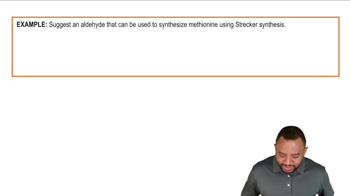Show how the following compounds can be prepared, using ethyne as one of the starting materials:
2. 1-phenyl-2-butyn-1-ol

 Verified step by step guidance
Verified step by step guidance Verified video answer for a similar problem:
Verified video answer for a similar problem:



 3:19m
3:19mMaster Sodium Alkynide Alkylation with a bite sized video explanation from Johnny
Start learning